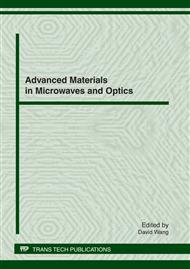p.550
p.556
p.562
p.569
p.574
p.579
p.586
p.592
p.598
Simulation and Design on a New Uniform Radiation Source for Calibration of Satellite Remote Sensors
Abstract:
High-precision calibration of space sensors is a complex task. For calibration, integrating sphere system is the main equipment to produce large area uniform radiation source. Such integrating spheres are usually very huge with large diameters, generally more than one meter. Furthermore, such a large integrating sphere costs very high. In order to reduce the size of integrating sphere and cost, the necessary pre-simulation is very necessary. In this paper, a new semi-integrating sphere with 1300mm diameter was designed by using of ray-tracing algorithm on different special structures to improve the design efficiency. The results showed that, 1. The output of semi-integrating sphere system is more sensitive to its inner light source location and the aperture. 2. The practical measurement of semi-integrating sphere is approaching to the simulation findings. Although the opening diameter of semi-integrating sphere reaches to 50% of the diameter of semi-integrating sphere, the output radiance uniformity is still larger than 95% and with better performance.
Info:
Periodical:
Pages:
574-578
Citation:
Online since:
January 2012
Authors:
Keywords:
Price:
Сopyright:
© 2012 Trans Tech Publications Ltd. All Rights Reserved
Share:
Citation:


